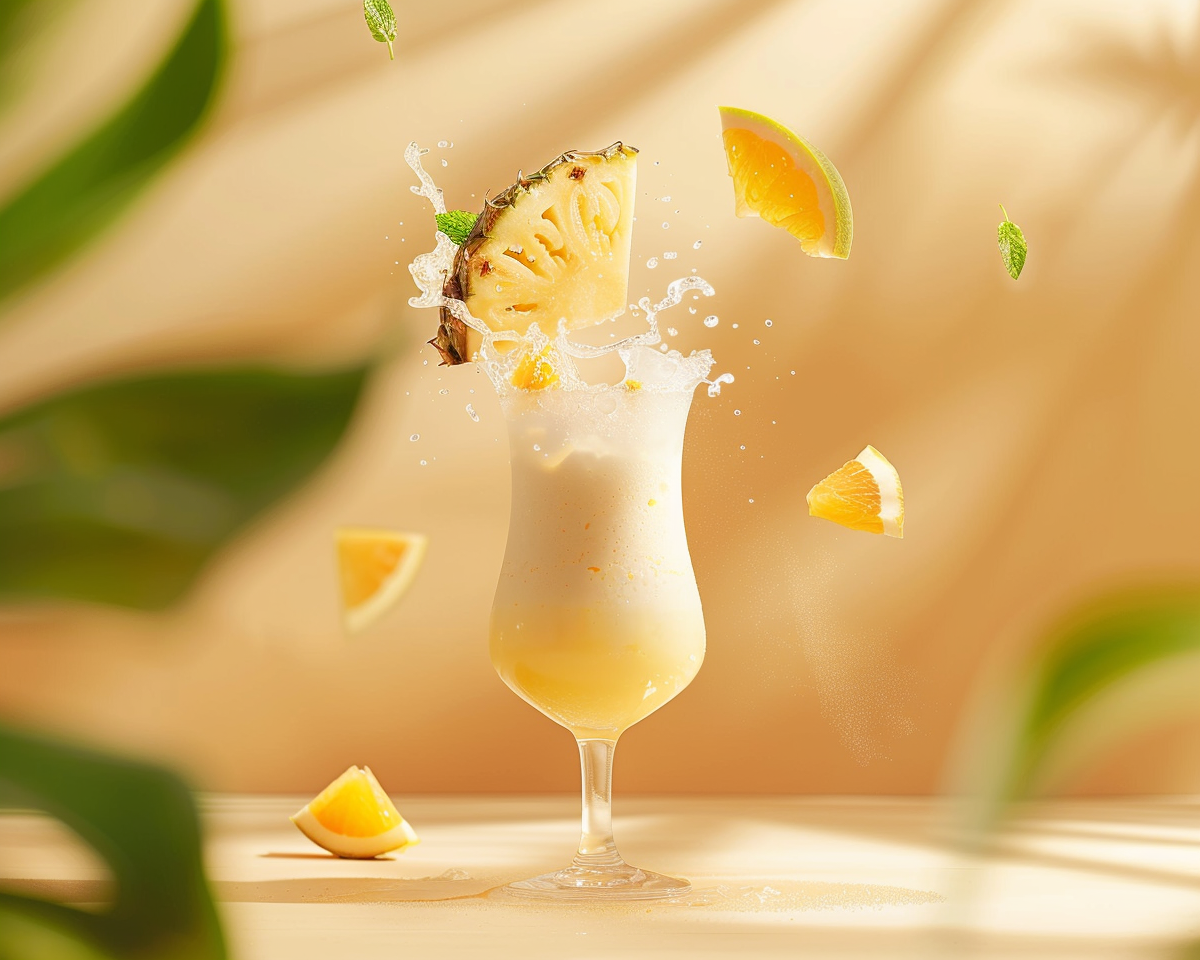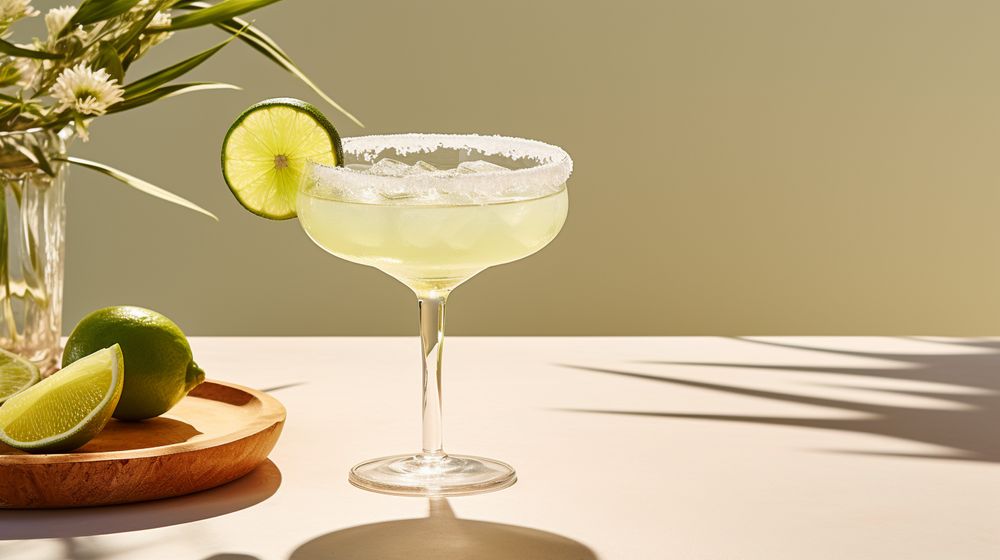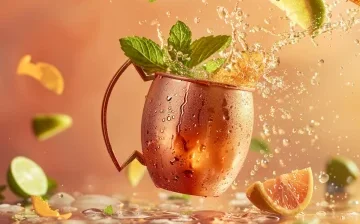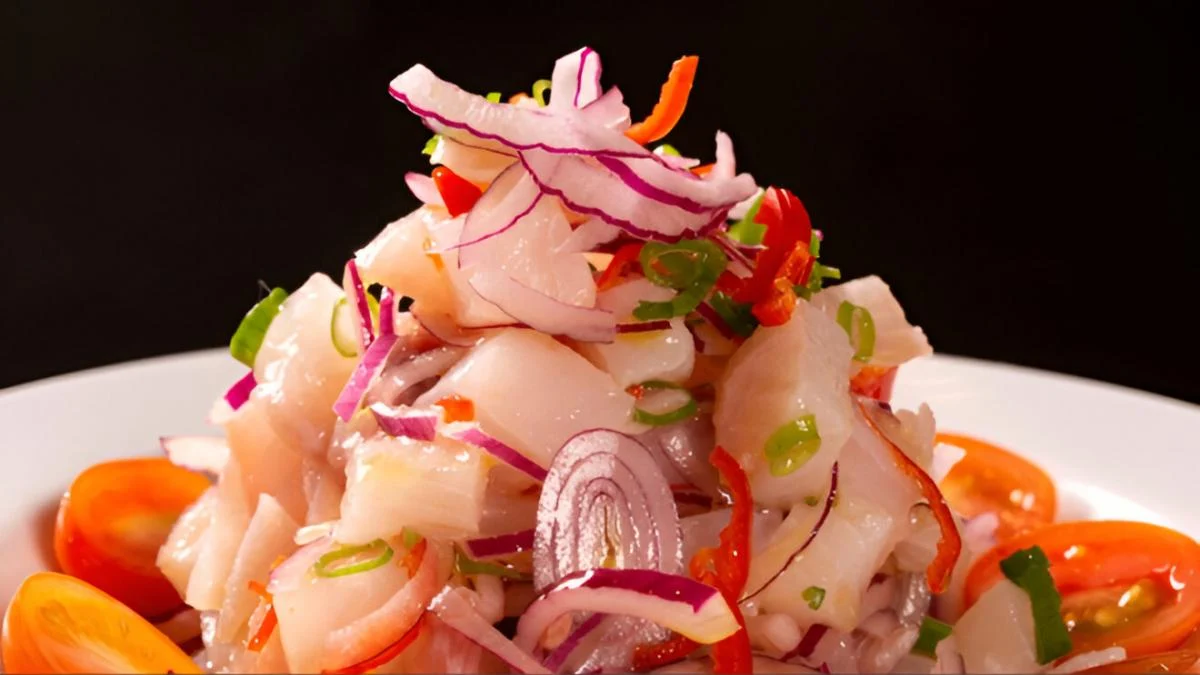Introduction: Setting the Stage for Craft vs Commercial Vodka
The world of vodka is surprisingly diverse and full of character.
Tracing its roots back to Eastern Europe, vodka has evolved from a staple spirit to a canvas for creativity, especially in the battle between craft and commercial variants.
In this exploration, we’ll delve into their histories, their distinct production methods, and ultimately, what sets them apart in your glass.
Craft vodka is to mass-produce vodka what artisanal bread is to factory-produced loaves. The former is an experience, the latter a convenience.
In contrast to mass-produced vodka, which may be primarily distinguished by its bland flavor, craft vodka offers a wide variety of complex flavors.
It’s a testament to the skill of the distiller and the quality of the ingredients used.
Furthermore, craft distilleries often utilize time-honored methods, some dating back centuries, that large-scale manufacturers simply can’t replicate.
Understanding Vodka: The Basics
At its heart, vodka is a spirit typically distilled from grains or potatoes.
The crucial step entails fermenting these ingredients to make alcohol, which is then concentrated and impurities removed through distillation.
The end result is a spirit that is typically around 40% alcohol by volume. However, the similarities largely end there when comparing craft and commercial vodka.
Check out more information about The Art of the Vodka Distillation Process.
Craft Vodka: A Labor of Love
For the casual observer, vodka might appear to be a simple, clear spirit. But for those in the know, it’s a world filled with subtlety, sophistication, and a great deal of passion.
Central to this is the world of craft vodka, a realm where artisans painstakingly produce small batches of vodka infused with local flavor and tradition.
So, what exactly qualifies vodka as ‘craft’? Let’s take a look.
The Heart and Soul of Craft: Small Batch Production
When it comes to craft vodka, small is beautiful. Unlike their commercial counterparts, craft vodka producers limit their output, creating only small batches at a time.
This isn’t due to a lack of ambition or ability, but a conscious choice to prioritize quality over quantity.
Every bottle of craft vodka has been through a production process managed by actual people who oversee each step, from selecting the grains or potatoes to the fermentation process to the final distillation.
This dedication to the hands-on approach often results in a product that is unique and variable, with subtle differences between batches.
So, if you’ve got two bottles from different batches of the same craft vodka, you’re in for a slightly different experience each time.
Craftsmanship: The Key to Unique Flavors
In addition to small-batch production, another hallmark of craft vodka is the distillation process.
While commercial vodkas often opt for column stills that can churn out vodka continuously and rapidly, craft distilleries tend to favor the slower, more traditional pot still method.
In a pot still, the fermented liquid, or wash, is heated to the point where the alcohol evaporates.
This vapor is then collected and condensed back into liquid form. Unlike column stills, which can remove nearly all impurities, pot stills allow for a certain level of impurities to remain, contributing to the flavor and character of the vodka.
Ingredients Matter: Going the Extra Mile
Craft distilleries also place a great deal of emphasis on their ingredients.
Whether they’re growing their own grains or potatoes, sourcing them locally, or ensuring they’re organically grown, craft vodka producers understand that quality ingredients lead to a quality end product.
Many craft vodkas will boast of their use of non-GMO grains, organic potatoes, or water sourced from some remote, pure spring. It’s not just marketing; these ingredients make a difference.
They can impact everything from the smoothness of the vodka to its mouthfeel to the subtle notes of flavor that can be coaxed out during the distillation process.
Vodka Craft Brands
The most famous craft vodka brands in the United States and Europe are:
United States:
- Tito’s Handmade Vodka: Based in Austin, Texas, Tito’s has become one of the most successful craft vodka brands in the U.S., renowned for its smoothness and affordability.
- Hangar 1: Located in Alameda, California, Hangar 1 distills their vodka from a mix of grains and grapes, giving it a unique flavor profile.
- Charbay: Based in California’s Napa Valley, Charbay is a family-owned distillery that produces an array of spirits, including high-quality craft vodka.
Europe:
- Chase Distillery: Located in Herefordshire, England, Chase is the first single-estate distillery in the UK, meaning they grow their own potatoes for vodka production.
- Adnams: This English brewery also makes a range of spirits, including award-winning vodkas. Their Longshore Vodka has been named one of the best in the world.
- FAIR. Spirits: This French distillery is not only known for its quality craft vodka, but also for its ethical practices, sourcing fair trade and organic ingredients.
Commercial Vodka: The Mass Market Monolith
Contrary to craft vodka, commercial vodka is all about scalability and consistency.
Large brands such as Smirnoff and Absolut dominate the market, offering a universally recognizable product, whether you’re in New York or Tokyo.
These distilleries prioritize volume, producing thousands of liters per batch and utilizing efficient modern techniques.
Key Differences: Craft vs Commercial Vodka
Beyond the scale of production, craft and commercial vodka differ on several fronts.
The ingredients used in craft vodka are often locally sourced and organic, resulting in a distinct taste.
Commercial vodka, on the other hand, typically opts for a more neutral flavor. Additionally, the distillation methods vary significantly; craft distilleries often use pot stills for their processes, whereas commercial distilleries use column stills for efficient, continuous distillation.
The Taste Test: Experiencing Craft vs Commercial Vodka
A craft vodka tasting can reveal the nuanced flavors of its ingredients, offering notes of sweetness, fruitiness, or creaminess, depending on the base ingredient used.
Commercial vodka, meanwhile, aims for a clean, smooth taste with minimal flavors beyond a general warmth and subtle grain or potato character.
Price Point: Evaluating Cost vs Quality
One can expect to pay more for a bottle of craft vodka, a reflection of the manual labor and high-quality ingredients that go into its production.
Commercial vodka, produced on a large scale, usually comes at a lower cost, providing a more accessible price point for the everyday consumer.
Environmental Impact: Craft vs Commercial Vodka
The production process for vodka can have a significant environmental impact, from the agricultural practices for the raw materials to the energy used in distillation.
Craft distilleries often strive for sustainability, using local and organic ingredients and recycling waste, while commercial distilleries, due to their scale, may face greater challenges in minimizing their environmental footprint.
| Aspect | Craft Vodka | Commercial Vodka |
| Production Scale | small-batch production, often handcrafted. | Mass-produced in large quantities. |
| Distillation Process | Typically, they use traditional pot stills, allowing for more flavor variation and uniqueness. | Primarily use modern column stills for efficient, continuous distillation, resulting in a more neutral flavor. |
| Ingredients | Often locally sourced, organic, or non-GMO. Quality and the source of ingredients are emphasized. | Ingredients are selected for scalability and consistency and may not be locally sourced. |
| Flavor Profile | Flavors can vary from batch to batch. Tends to have a distinct, unique taste. | Consistent flavor from bottle to bottle. Generally smooth and neutral. |
| Price | Tends to be higher due to smaller-scale production and the use of high-quality ingredients. | Usually cheaper due to large-scale production and economic efficiency. |
| Environmental Impact | Often prioritizes sustainability, using local ingredients, and adopting waste recycling practices. | Due to its scale, it may have a larger environmental footprint, though many are working towards more sustainable practices. |
| Brand Story | Often have a unique brand story tied to a region, tradition, or individual. | Branding is usually more mainstream and globally recognized. |
Case Studies: Notable Examples of Craft and Commercial Vodkas
To illustrate the contrast between craft and commercial vodka, let’s consider two distilleries.
Tito’s Handmade Vodka, a craft distillery, prides itself on old-fashioned pot stills and a taste that is distinctly Texan.
On the commercial side, Grey Goose, with its massive distillery in France, ensures a vodka that is consistently smooth and mild no matter where it’s purchased.
| Aspect | Tito’s Handmade Vodka | Grey Goose |
| Production Scale | Small-batch production, priding themselves on the handmade nature of their vodka. | Produced on a large scale and distributed globally. |
| Distillation Process | Distilled in old-fashioned pot stills, following Tito’s personal techniques. | Distilled using a five-step process in column stills for purity and clarity. |
| Ingredients | Uses 100% yellow corn, which is unusual for vodka, contributing to a sweeter, rounder taste. | Uses single-origin French wheat and water from the Gensac-la-Pallue spring in France. |
| Flavor Profile | A slightly sweet, corn-forward flavor with a smooth finish. | Known for its smoothness and light hints of citrus. |
| Price | Typically cheaper than Grey Goose, though more expensive than many commercial brands due to its craft nature. | As a premium vodka, it is typically more expensive. |
| Environmental Impact | Tito’s works to minimize its environmental footprint, and the distillery is partially powered by solar energy. | Grey Goose maintains a strong commitment to sustainability and claims to use every part of the wheat; the rest goes to French breadmaking. |
| Brand Story | Tito Beveridge started his distillery in 1997, fighting to legalize craft distilling in Texas. The brand still carries this independent spirit. | Grey Goose was created in the late 1990s by Sidney Frank to create a luxury vodka for the American market. Its branding revolves around its French origin. |
Conclusion: The Vodka Verdict
The choice between craft and commercial vodka ultimately comes down to personal preference.
Are you drawn to the rich, variable flavors of craft vodka and its connection to a specific region and its traditions?
Or do you prefer the smooth, consistent taste and accessibility of commercial vodka?
The world of vodka is vast and diverse; why not explore both sides and decide for yourself?
Clearing the Air: Frequently Asked Questions About Craft Vodka vs Commercial Vodka
What exactly is craft vodka?
Craft vodka is a type of vodka made by small-scale distilleries.
They focus on quality, flavor, and traditional or innovative distilling techniques rather than large-scale production.
The term “craft” signifies the craftsmanship, passion, and attention to detail that go into creating each batch.
How is commercial vodka different from craft vodka?
Commercial vodka is produced on a much larger scale than craft vodka.
It’s made with efficiency and consistency in mind, often using modern distilling techniques.
While craft vodka tends to have more unique flavor profiles, commercial vodka is typically smoother and more neutral, aiming for a standardized taste across all bottles.
Does craft vodka taste better than commercial vodka?
This is subjective and largely depends on personal preference.
Some people appreciate the unique flavors and character that can come from craft vodka, while others prefer the smooth and reliable taste of commercial vodka.
We recommend exploring both to discover your own preference.
Are there any notable craft vodka brands I should try?
Absolutely! There are many excellent craft vodka brands out there. In the United States, some popular ones include Tito’s Handmade Vodka, Hangar 1, and Charbay.
In Europe, Chase Distillery, Adnams, and FAIR., Spirits are well-regarded.
Remember, part of the fun is discovering new brands and finding your personal favorites.
















